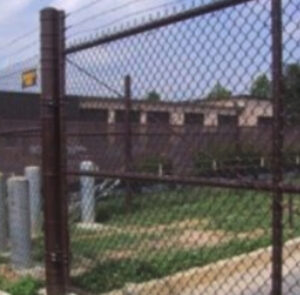
Security fencing plays an important role in protecting your business.
Security fencing plays an important role in protecting your business. A secure workplace perimeter offers better privacy and security, and in many industries is an absolute necessity. In order to better understand the value of security fencing, it might be helpful to know more about the five top elements of a security fence. Let’s dive in and look at what they are and why they’re important to the safety and security of your property and business.
Call 877-959-3534 for a Fence Quote!
Fence Height
For residential fencing, the height that you choose often has to do with either the presence of kids and pets or the limitations of your budget. For security fencing, the purpose of the fence is to secure the perimeter and height helps to achieve that. Most security fencing is 5-6 feet high. The height itself acts as a visual deterrent and also makes it physically harder to scale.
Entrenched Foundation
An entrenched foundation for your security fencing makes it much harder to topple the fence, even with a vehicle. The posts should be entrenched in concrete to withstand the leverage force from a collision. The interior components (panels, pickets, or links) can also be entrenched for added security. By entrenching the entire perimeter, you also create a fence that can withstand digging.
Strong Materials
For residential fencing people often opt for wood because of aesthetics or vinyl because of ease of maintenance. For security fencing, strength trumps all of that, so metal is the material of choice. Industrial steel can withstand great forces, including most collisions. The strength of industrial steel coupled with an entrenched foundation makes a very formidable perimeter.
Call 877-959-3534 for a Fence Quote!
Anti-Scaling Options
For security purposes, having a fence that is as difficult as possibly to climb is ideal, which is where anti-scale options come into play. For fencing like chain link, smaller gaps or added material woven into the links can impede climbing. For iron fencing, having vertical rungs and fewer cross bars make it harder to climb. For most security fencing, removing the top rail makes it almost much more difficult to top the fence even if one can climb it. As long as there is enough support to keep the fence sturdy, the top rail is superfluous.
Secondary Fencing
Some security fencing utilizes a secondary layer – either a second layer of fencing material or an actual second fence within the perimeter of the original fence (usually about 10-20 feet within). This secondary layer can help to increase privacy by limiting vision into the property and by limiting sound bleed in either direction. A secondary fence also increases the difficulty of entry, since it would be a second fence to break through or climb over.
Call 877-959-3534 for a Fence Quote!
The post Attributes Your Security Fencing Needs appeared first on Hercules Fence.